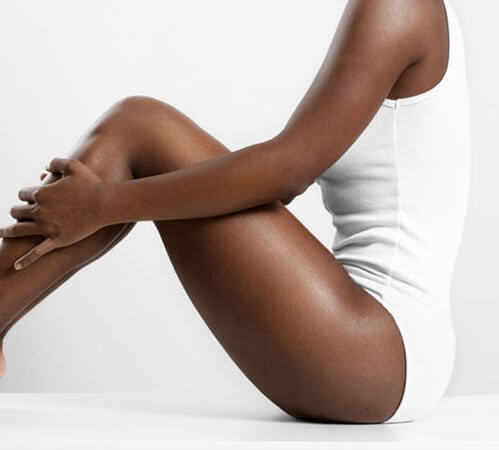Tummy Tuck (Lipo-Abdominoplasty)
Explore Topics On This Page
Dr Rory Dower performs the procedure to provide a natural-looking final outcome and ultimately help individuals reach their aesthetic ideal.
About the Tummy Tuck Procedure
During a consultation, Dr Dower will listen to your unique reasons for surgery and examine your cosmetic concerns. He will then speak transparently about the risks and expectations of the procedure and develop a treatment plan designed to fulfill your aesthetic goals. Tummy tuck (abdominoplasty) surgery generally has three main components and is performed utilizing general anaesthesia:
Muscle Tightening
First, abdominal muscles that have been weakened or stretched from childbearing, weight loss or other factors are brought back to their natural position in the midline. This corrects the appearance of an abdominal bulge, which often results from separated musculature that has become lax. Binding the muscles together and restoring their natural position can create a flatter aesthetic and more defined body contour.
Fat Removal
Excess fat around the abdomen is then removed to make underlying muscle tone more visible. This is accomplished through liposuction techniques. Patients who desire supplementary enhancement in this area often combine tummy tuck surgery with a full liposuction plastic surgery procedure to remove additional fatty deposits around the back, flanks or waistline.
Skin Tightening
The last stage of tummy tuck surgery involves correcting the appearance of overhanging skin caused by lax musculature. Excess skin is trimmed, while remaining skin tissue is pulled taut to further firm and smooth the abdomen. A new opening for the belly button is created, and the navel is repositioned to its original location for a natural-looking outcome.
Depending on the complexity of your treatment plan, the tummy tuck procedure may necessitate an overnight stay— particularly if the surgery is combined with other cosmetic treatments. Dr Dower will inform you of every step of the process prior to surgery.
Recovery from a Tummy Tuck
Each patient’s recovery period varies depending on the details of their individual treatment plan. Dr Dower will provide personalized post-operative instructions at the time of operation. In general, a compression garment may be worn around the abdomen and other treated areas to decrease fluid retention, minimize swelling and facilitate the healing process.
A return to normal activities can be expected in approximately two to four weeks.
Results from a Tummy Tuck
The aesthetic results of the tummy tuck procedure can be immediately apparent, but the final outcome generally improves as internal healing progresses. Following surgery, patients usually report a slimmer waistline, as well as a flatter and more contoured abdominal appearance. For many individuals, the procedure provides the cosmetic enhancement that can allow them to attain their ideal figure. Dr Dower takes every measure to minimize noticeable scarring, and any visible incision lines typically fade as time passes.
FAQs about Tummy Tuck
What’s the difference between a full tummy tuck and a mini tummy tuck?
The mini tummy tuck targets the area below your belly button and doesn’t involve repositioning the belly button. A full tummy tuck involves full length muscle repair, removal of excess skin, repositioning of the belly button and liposuction. Muscle repair may be done in both, although it can be more challenging to repair the muscles higher up in a mini tummy tuck procedure. The incision is longer in a full tummy tuck.
Who is a good candidate for a tummy tuck procedure?
You may be a good candidate for a tummy tuck if you:
- Are having trouble losing weight over your abdominal area despite exercise and/or successful weight loss in other areas.
- Have a stubborn bulge in your midsection, either due to excess fat or weak tummy muscles, following changes after pregnancy.
After liposuction of the tummy and flanks, will the fat come back if I gain weight?
Liposuction is a contouring procedure. Fat cells are removed from various areas and this is permanent. If you gain a significant amount of weight after the procedure, the cells that remain can enlarge, although the overall contour will remain improved.
Is it a good idea to have a tummy tuck at the same time as a C-section?
No, it’s a bad idea for these reasons:
- Disappointing results
The skin and muscles are stretched during pregnancy – over the next few months as the hormones in your body change, some of this stretching will retract. If you’re doing a tummy tuck at the same time of your C-section, it’s difficult for your surgeon to judge how much skin to cut out in order to achieve a good result. - Difficult recovery
Recovering from a tummy tuck or C-section is difficult. Recovering from both surgeries at the same time, on top of caring for a newborn baby, is complicated and exhausting! - Complications
Both procedures have risks, and combining them can increase the potential for complications. Around the time of pregnancy, women are also at increased risk of blood clots and fluid retention, plus there’s a greater risk of infection.
- Disappointing results
What is the recovery like after a tummy tuck procedure?
Generally a tummy tuck is done under general anaesthesia and an overnight hospital stay may be required, particularly when it is combined with other procedures. The emphasis is on your safety and the importance of walking and performing moderate daily activities early on in your recovery cannot be overemphasized. A return to more normal activity takes around two weeks. A light compression garment may be recommended during your recovery to help reduce fluid retention and shape your flatter abdomen.
Will a tummy tuck help me lose weight?
The procedure in itself is not designed for weight loss but is rather a contouring procedure. Individuals near their ideal weight often achieve the best surgical results.
For more information on tummy tuck surgery, or to schedule a consultation, please contact our practice today.








